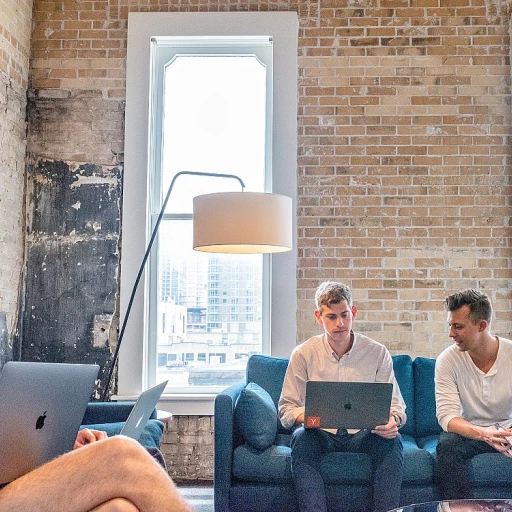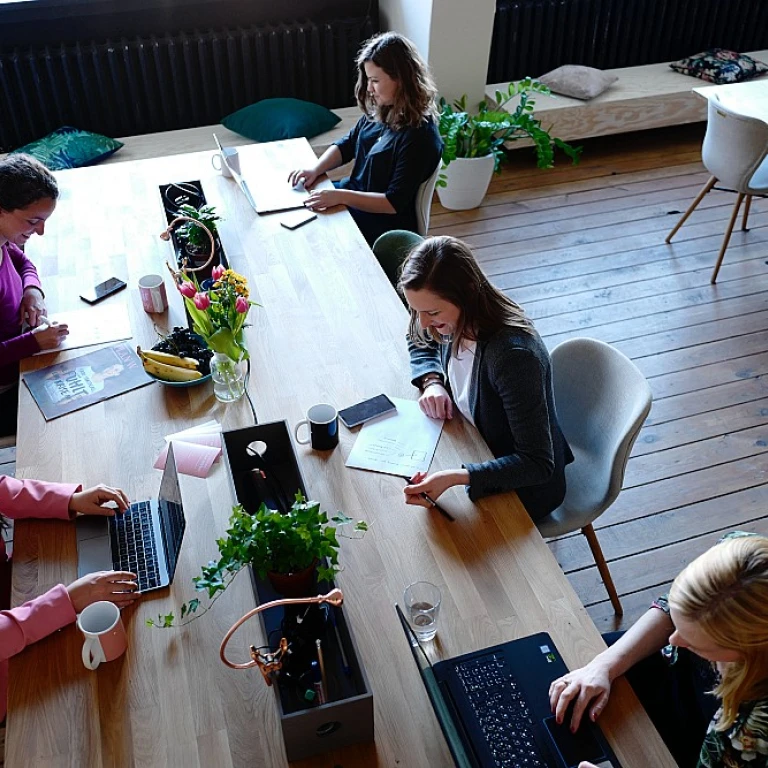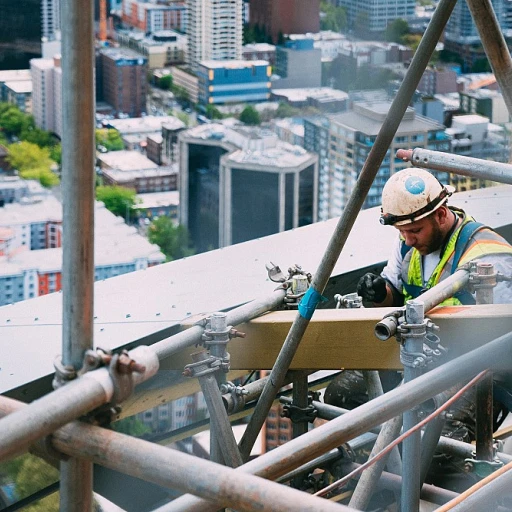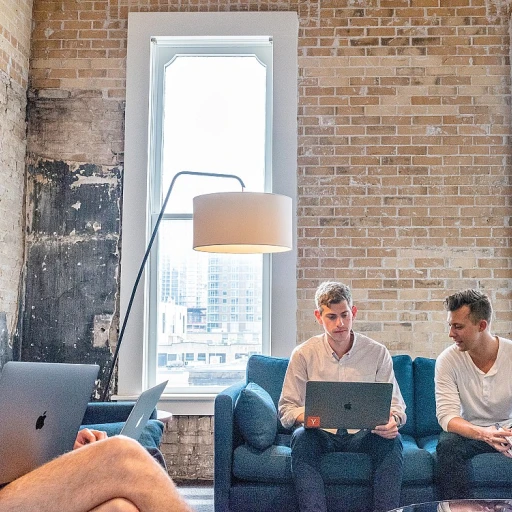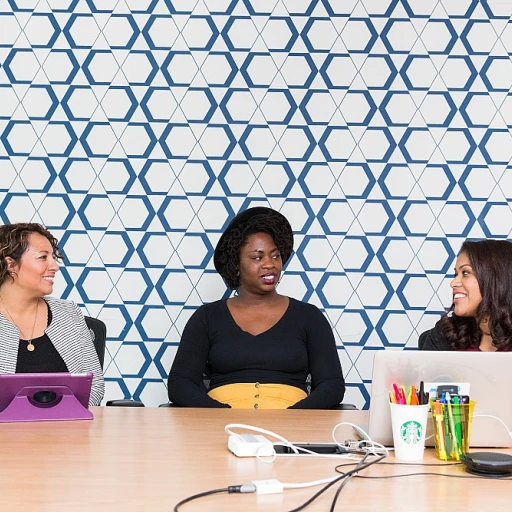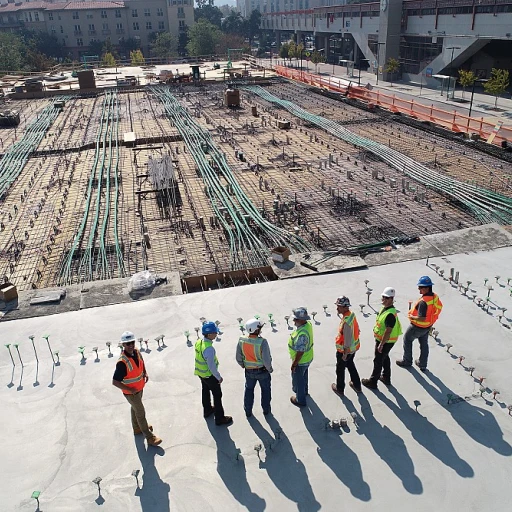The Rise of Hybrid Work Models
Navigating the Hybrid Work Landscape
The world of work is undergoing a significant transformation as organizations increasingly adopt hybrid work models. These models, blending remote and in-office work, are reshaping how companies design their office spaces. The goal is to create environments that are both flexible and efficient, catering to a workforce that may not be present every day.
In this evolving landscape, office design is about more than just aesthetics; it's about crafting spaces that harmonize with new work dynamics. Companies are investing in adaptable workstations, enabling employees to choose how and where they prefer to work. This flexibility is essential for fostering a sense of autonomy and enhancing productivity.
Additionally, with the hybrid model's rise, the design of collaborative spaces is evolving to accommodate both in-person and virtual interactions. Integrating smart technologies and seamless connectivity becomes crucial, ensuring that teams remain connected and collaborative regardless of their location.
As businesses prioritize employee well-being and productivity, they are also focusing on biophilic design, bringing nature indoors to create a more inviting and health-conscious work environment. These trends are part of a broader movement towards sustainable practices, as companies seek to minimize their ecological footprint through eco-friendly materials and innovative solutions.
For more insights on how these trends are shaping the future of work, check out a glimpse into future work environments.
Smart Technology Integration in Modern Offices
Integrating Smart Technologies for Enhanced Efficiency
As companies navigate the rapidly evolving landscape of office design, integrating smart technologies has become more vital than ever. The potential for these advanced tools to transform the modern workplace is immense, making offices not just places to work but smart ecosystems that adapt to the needs of their occupants.
Smart technology is all about creating more responsive and flexible work environments. Imagine a conference room that can adjust its lighting, temperature, and even audio settings based on the scheduled meeting type or the number of participants. Or think about workstations that automatically book themselves depending on an employee's schedule and preferences. These innovations not only boost efficiency but also contribute to a more personalized employee experience.
Embracing these technologies allows for better space management solutions. With sensors and data analytics, companies can gain insights into how their office spaces are used, enabling more efficient allocation and utilization. This data-driven approach supports real-time decision-making, ultimately enhancing productivity.
Furthermore, the integration of smart technologies aligns with the
future of the modern office. By adopting such solutions, businesses can remain agile and responsive in a world where the line between physical and digital workspaces continues to blur. Companies that harness this potential are poised to offer dynamic and agile environments that meet the demands of an increasingly digital workforce.
The journey of weaving smart technology into the office environment ties seamlessly with the previous steps of adopting hybrid models and will continue to evolve as we look at how collaborative spaces are reshaped to prioritize employee connection and innovation.
Biophilic Design: Bringing Nature Indoors
Creating Connections with Nature
In the quest to boost workplace morale and productivity, office designs are increasingly leaning towards biophilic elements. Biophilic design isn't just a buzzword; it's a growing trend that focuses on bringing the tranquility and vitality of the natural world indoors. Incorporating these elements into the office environment is more than an aesthetic choice; it's a conscious effort to foster a healthier and more engaging workspace.
By intertwining aspects of nature with the built environment, companies aim to provide employees with a sense of calm and well-being amid the hustle and bustle of modern work life. Features such as living green walls, indoor plants, natural light optimization, and the use of organic materials are becoming more common.
Moreover, the impact of such integration goes beyond mere decoration. Research suggests that exposure to natural environments can lead to increased focus, creativity, and contentment. It's an approach that synergizes well with the other office design trends, such as the rise of
hybrid work models and the use of technology to facilitate better employee experiences, creating spaces where collaboration and well-being are prioritized.
As companies continue to explore innovative ways to cultivate productive and harmonious workplaces, biophilic design stands out as a vital component. To delve deeper into the ways modern offices are transforming to meet future demands, explore
this comprehensive insight into how technology is shaping tomorrow's workplace.
The Evolution of Collaborative Spaces
Transforming Spaces for Team Synergy
In today's rapidly evolving professional landscape, collaborative spaces are being reimagined to foster greater synergy and innovation among teams. These areas are no longer defined by static tables and chairs but are instead designed to adapt fluidly to the needs of those using them. This transformation is closely linked to the rise of hybrid work models, where flexibility and adaptability are paramount.
A major trend in this evolution is the emphasis on multi-purpose areas that support different styles of working. This might include reconfigurable furniture that can be easily shifted for team meetings, breakout sessions, or solo work. The aim is to enhance productivity by ensuring that the office layout can accommodate various tasks without hindrance.
Furthermore, state-of-the-art technology is seamlessly integrated into these spaces, ensuring that employees have the tools they need at their fingertips. From interactive whiteboards to enhanced video conferencing tools, the modern office is equipped to blur the lines between in-person and remote collaboration. This incorporation of smart technology supports the push towards creating environments that cater not only to in-office workers but also to those joining from afar.
Another exciting aspect of this trend is the incorporation of biophilic elements. Nature-inspired designs are making collaborative spaces more appealing and conducive to creative thinking. Whether through living walls, natural lighting, or the use of sustainable materials, these additions are fostering a connection to nature that can help to reduce stress and improve overall well-being.
As we continue to reprioritize employee comfort and productivity, these transformed collaborative spaces are creating environments where workers can thrive both individually and collectively. The office of the future is not just a place of work but a dynamic space that inspires innovation and connection.
Prioritizing Employee Well-being and Productivity
Enhancing Health and Efficiency in the Workplace
As office environments continue to evolve, there is a clear shift towards prioritizing employee well-being and productivity. Modern design trends recognize that a content, healthy workforce is a more effective one. Businesses are now reshaping their workspaces with the intent to enhance both mental and physical health, while simultaneously fostering a productive culture.
An essential aspect of this holistic approach is designing spaces that allow employees the flexibility they need for their work styles. The rise of hybrid work models has paved the way for offices that are increasingly adaptable, catering to individuals who may split their time between home and the workplace. To support this, office layouts are moving away from traditional cubicles, towards open, collaborative spaces that invite interaction but also provide areas for focused, solitary work.
Moreover, incorporating ergonomic furniture is central to promoting physical well-being. It's common now to see adjustable desks, ergonomic chairs, and accessory stands becoming standard features, allowing employees to customize their workstations for optimal comfort. This supports overall health by encouraging better posture and minimizing strain during long working hours.
Another cornerstone of workplace well-being is providing access to natural light and clean air, a focus that ties closely with the trend of biophilic design. Large windows, strategic skylight placement, and indoor plants are integrated not only to make the office environment aesthetically pleasing but also to rejuvenate the spirits of those who spend their days indoors.
Yet, it's not just about physical comfort. Emotional well-being is also front and center in future office designs. Creating a supportive atmosphere, inclusive of recreational areas and mindfulness zones, allows employees much-needed breaks from stress, helping to maintain mental health.
Ultimately, by centering office design on well-being and productivity, companies are investing in their most valuable asset—people. The office of the future is more than a place of work; it is a strategic environment that contributes significantly to the success and happiness of its employees.
Eco-friendly Materials and Sustainable Practices
Sustainability at the Forefront of Office Design
As businesses continue to rethink the essence of the workplace, the shift toward eco-friendly materials and sustainable practices has taken center stage in office design. This trend is not only about reducing carbon footprints but also about creating healthier and more engaging environments for employees, aligning perfectly with the prioritization of employee well-being and productivity.
Companies are increasingly opting for materials that are not only aesthetically pleasing but also sustainable. Recycled, upcycled, and responsibly sourced materials are becoming staples in the modern office. For example, furniture made from recycled plastics or responsibly sourced woods can significantly reduce environmental impacts while still providing comfort and style. This reflects a growing awareness and responsibility toward the environment, which many organizations are keen to incorporate into their brand narratives.
Furthermore, the integration of smart technology, as previously highlighted, plays a crucial role in bolstering sustainability. Energy-efficient lighting, HVAC systems, and automated devices help reduce energy consumption considerably. These technologies can monitor usage and adapt operations to lessen their environmental impact, showcasing the seamless blend of innovation and eco-consciousness.
Biophilic design complements these sustainable practices by enhancing office aesthetics with natural elements, such as living walls and indoor plants, that improve air quality and reduce stress levels. Thus, biophilic elements support not only a sustainable environment but also employee well-being.
The evolution of collaborative spaces, as explored earlier, also intersects with sustainability. Flexible furnishings that can be reconfigured for various uses minimize the need for multiple furniture pieces, further reducing waste.
In conclusion, the future of office design trends is holistic—encompassing hybrid work models to eco-friendly practices—each aspect contributing to a unified vision of a sustainable and efficient workspace that meets the changing demands of the future workforce.
